By
Cynthia M. Lardner
The Threat to Global Stability and Security
Geopolitical tensions have risen to a level where another major war or even world war is no longer outside the realm of possibilities. There has been a military build-up by the Russian Federation and the People’s Republic of China in the South China Sea (SCS), and by Russia in the Baltic and Western European regions.
China’s SCS Dispute with Malaysia, Vietnam, Brunei, Taiwan, Indonesia, and the Philippines over oil rich territory rich is most troubling. Both China and Russia have increased their military presence in the northern Pacific Ocean where they have been engaging in joint military exercises. An eruption of armed conflict involving China, may result in both responding.
There are also the ongoing concerns regarding erratic North Korea, which has restarted plutonium fuel production.
Russia’s relationship with NATO, its member nations, allies and partners deteriorated following Russia’s illegal annexation of the Crimean Peninsula and its unlawful aggressions in Ukraine. This precipitated a sharp shift in Western foreign policy toward Russia. The West has moved away from the Doctrine of Mutual Assured Stability and beyond a policy of containment to a position of deterrence. Knowing that NATO will respond, it is unlikely that Moscow will engage in armed conflict on European soil.
Less likely would be a scenario where armed conflict develops in the Atlantic and Pacific theatres as it is questionable whether the U.S., the European Union, NATO and their allies could adequately respond.
The South China Sea – A Deepening Rift
While China and Russia are embroiled in territorial disputes in the Pacific Ocean, it is China’s SCS Dispute that is particularly troublesome. The expansionist goal of the two countries is that they gain control the maritime activities in the region, impeding routine missions patrolling the area and impeding the territorial rights of other nations, and allowing them to exploit the region’s rich oil reserves. In the SCS there are 11 million estimated barrels of oil, 190 trillion cubic square feet of natural gas, and $5.3 trillion in annual trade passing through the region.
Competing South China Sea Claims
China’s sweeping claims of sovereignty over the SCS have antagonized Malaysia, Vietnam, Brunei, Taiwan, Indonesia, and the Philippines, each of which has competing territorial and jurisdictional claims in the SCS. China has grown increasingly more assertive in advancing its position in these disputes, known as the South China Sea Dispute, by substantially modernizing its maritime paramilitary forces and increasing its naval capabilities. In recent months, tensions in the South China Sea have steadily grown, amid global concerns over China’s constructions of artificial islands in the Spratly Islands and its continuing militarization in the Paracel Islands.
There is one pending case before the Permanent Court of Arbitration (PCA) in The Hague between China and the Philippines concerning lawful sovereignty over an area rich in natural gas deposits. The matter was brought by the Philippines as to the legality of China’s “nine-dash line”. China has never clarified the parameters of the “nine-dash line”, which encompasses approximately 80% of the SCS. The Philippines claims that China violated the United Nations Convention on the Law of the Sea (UNCLOS); an agreement about territorial seas and exclusive economic zones (EEZ).
China’s motivation is not the preservation of ancestral waters or historical fishing sites, protected by the UNCLOS; rather China seeks to complete a “strategic triangle” in the SCS to monitor and control regional maritime activities, to bolster its naval position, and to gain access to much-needed natural resources. To further its interests, China has built man-made islands and artificial harbors on reefs creating more than 3,200 acres, and increasing its EEZs by 200 nautical miles or 370 km, and its territorial seas by 12 nautical miles or 22 km, on which it has installed airfields and surveillance systems, and a radar tower. China now plans on installing an Air Defense Identification Zone, or ADIZ, covering the SCS. An ADIZ demarcates a zone outside a country’s national airspace where planes must identify themselves for security reasons and follow the country’s military instructions.
Newly constructed radar dome on Chinese-controlled Subi Reef
The Pentagon has accused China of using “coercive tactics short of armed conflict.”
The Philippines is expected to prevail in proceedings boycotted by China. China called the PCA arbitration illegal and stated that it would ignore the PCA’s decision, even though China is one of five permanent United Nations Security Council members. As the PCA has no enforcement authority, enforcement will fall upon other nations both in and outside of the SCS region.
“Only when everyone plays by the same rules can we avoid the mistakes of the past, like when countries challenged one another in contests of strength and will, with disastrous consequences for the region,” stated U.S. Defense Secretary Ash Carter on June 3, 2016.
The U.S. could also be drawn into this conflict based on the 1951 Mutual Defense Treaty between the U.S. and the Philippines. The Treaty states, “Each Party recognizes that an armed attack in the Pacific Area on either of the Parties would be dangerous to its own peace and safety and declares that it would act to meet the common dangers in accordance with its constitutional processes.” If the U.S. failed to respond, it could damper its relationship with other nations in Asia.
Also relevant is the 2002 Declaration on the Conduct of Parties (DOC) in the South China Sea, in which ASEAN and China agreed upon multilateral risk-reduction and confidence-building measures. DOC requires that territorial and jurisdictional disputes be resolved without resorting to the threat or use of force.
Chinese and Russian Joint Military Buildup
In advance of the G7 Summit, China warned Japan not to involve the G7 in the SCS Dispute. Russian Foreign Minister Sergei Lavrov, on April 14, also issued a statement that, while international law ought to be respected, Russia disapproved of internationalization of the dispute, stating, “Our position is determined by the wish, natural for any normal country, to see disputes resolved directly between the countries involved in a peaceful political and diplomatic manner, without any interference from third parties or any attempts to internationalize these disputes.”
The Chinese Foreign Ministry reacted “by heralding the two countries’ converging position on the South China Sea”.
Ignoring the Chinese and Russian warnings, but without mentioning China, the G7, from which Russia has been excluded since annexing Crimea, expressed concern over Chinese aggression in the SCS.
A Fact Sheet released by the White House summarized the April 7, 2016 G7 Summit:
“G-7 leaders reiterated their commitment to a rules-based order at sea, peaceful dispute settlement, and respect for freedom of navigation and overflight. G-7 leaders also reaffirmed the importance of states’ making and clarifying their claims based on international law [including the Declaration on the Conduct of Parties in the South China Sea]; refraining from unilateral actions; not using force or coercion; and seeking to settle disputes by peaceful means including through juridical procedures.”
On April 29, 2016 Chinese Foreign Minister Wang Yi and Russian Foreign Minister Sergei Lavrov held a joint press conference in Beijing declaring shared opposition to “interference from third parties” and “attempts to internationalize” the dispute. Chinese Foreign Minister Wang Yi stated that China and Russia should join together to oppose “internationalising” the disputes.
Russian Defense Minister Sergei Shoigu stated on May 23, 2015 that, “Russia would deploy top-of-the-line Bal and Bastion coastal defense systems — with ranges of up to 450 kilometers — as well as Russia’s new Aeleron-3 drones. The apparent goal is to create an area-denial zone around the Kuril Island chain similar to those recently fielded in Crimea and Syria.”
The purpose of the Bastion-P is to engage various surface ships, as well as carrier battle groups, convoys or landing craft. In some cases missiles fired from this system can strike surface targets. The Bastion-P launcher carries two P-800 Oniks/Yakhont and SS-N-26 Strobile anti-ship cruise missiles, having a range of 300 km, with hi-low flight trajectory and 120 km with low-low flight trajectory. The warhead, weighing 200-250 kg., can carry nuclear or conventional warheads.
At first, Mr. Shoigu alleged Russia’s Red Pacific Fleet was sending six of its warships carrying 200 troops, launched in April, to conduct a three-month “expedition” to the Kuril Islands. The real mission is to establish a Russian military base on Matua Island, one of the Kuril Islands involved in its dispute with Japan. The Matua Island base will hold 87 contract troops, 700 units of military equipment and weaponry, 60 new aircraft and helicopters, three vessels and over 20 drones. Based on a photograph released by Russian controlled state media, the warships were accompanied by nuclear-powered submarines.
Days prior to the May 30-31, 2016 “Russia and China: Taking on New Quality of Bilateral Relations international Conference”, Russian Foreign Minister Sergey Lavrov stated, “[W]e closely cooperate on the international arena, where our cooperation serves as a very important stabilizing factor. We will continue to jointly with the Chinese friends advance the necessary steps in order to ensure that our cooperation reaches new levels.”
Lavrov added that proposals for all directions of cooperation were being drawn up “with the goal to further deepen cooperation in politics, economy and humanitarian area.”
“Russia and China are priority diplomatic partners for each other within the framework of their strategic coordination. Our countries implement close interaction in the international arena. Russian-Chinese relations are an important factor in the world peace and stability. During Vladimir Putin’s visit to China, the two leaders will exchange views on the development of bilateral relations and on international issues,” stated Hua Chunying, Deputy Director of Foreign Ministry Information Department of the People’s Republic of China.
At the conference, Western economic sanctions against Russia were deemed moot by Russia as it is looking to the East for economic growth and stability with China and Russia agreeing to increase trade from $90 billion in 2016 to $200 billion within four years.
Calling the SCS Dispute a man-made problem “forged by the United States… both Chinese and Russian leadership understand that we are better together and we are not so worried about America and its attitude to this issue,” stated Boris Titov, co-chairman of the Russian-Chinese Friendship committee and Russia’s ombudsman.
Moreover, Russia and China have been engaging in joint naval exercises in SCS. According to the Russian press service, Russia and China commenced their first joint computer anti-missile defense exercises Aerospace-Security-2016. Russia and China will use the results to formulate proposals on Russian-Chinese military cooperation in the field of anti-missile defense.
China’s waves -2 submarine-launched ballistic missile launched from underwater
“My sense is that each country will try and oppose the U.S. where it feels that its national interests require it, and that in a number of instances their national interests converge,” stated former Dutch Diplomat Joost Dirzwager.
The U.S. and France have bolstered their presence in the SCS. The Pentagon sent a guided-missile destroyer to maintain maritime rights. This was the third time in under a year that the U.S. has conducted freedom of navigation operations in the SCS.
U.S. Freedom of Navigation (FON) Program, created in 1983 “…provides that the United States will exercise and assert its navigation and overflight rights and freedoms on a worldwide basis in a manner that is consistent with the balance of interests reflected in the Law of the Sea (LOS) Convention. The United States will not, however, acquiesce in unilateral acts of other states designed to restrict the rights and freedoms of the international community in navigation and overflight and other related high seas uses.”
According to DoD spokeswoman Lieutenant Colonel Michelle Baldanza, on May 17, 2016, when the U.S. sent an unarmed U.S. military aircraft on routine patrol over the SCS, China responded with two fighter jets carrying out an interception at less than 50 feet forcing the U.S. plane to rapidly descent, which the Pentagon deemed unsafe.
China insists that reconnaissance activities undertaken without prior notification and without permission of the coastal state violate Chinese domestic law and international law. The U.S. responded by stating that the UNCLOS does not negate the right of military forces of all nations to conduct military activities in EEZs without coastal state notice or consent.
Days after Russia requested Vietnam permit it naval access, U.S. President Barack Obama visited Vietnam at which time a 50 year arms embargo was lifted, enabling Vietnam to obtain U.S. sourced radars and sensors, surveillance planes and drones to monitor and deter Chinese forces. The U.S. Navy has requested access to Cam Ranh Bay, the most coveted deep water harbor in the western SCS. If permitted, it would complement U.S. naval facilities in the Philippines on the SCS’ eastern edge.
Japan and Russia’s Kuril Islands Dispute
Japan has been embroiled in a long-standing dispute with Russia over a portion of the Kuril Islands, an archipelago stretching 1,300 km or 810 mi, from northern Japan to Russia’s Kamchatka peninsula, separating the Sea of Okhotsk from the North Pacific Ocean. As part of its territory, Japan claims the four ancestral islands; two southernmost and large Kuril Islands, Iturup and Kunashir, as well as the Shikotan and the Habomai Islets.
On February 7, 1855, Japan and Russia signed the Treaty of Commerce, Navigation and Delimitation, which established boundaries in the Northern Territories. Japan lost control of several of its islands at the end of World War II, when they were claimed by Russia. Japan has rejected Russian sovereignty over the islands in a dispute that has come to be known as the Northern Territories Dispute. Japan does not dispute Russian sovereignty over the other Kuril Islands.
As recent as this past April, Japan has engaged Russia in frequent but, unsuccessful dialogue in an effort to diplomatically resolve the conflict, going so far as to state that it would not displace Russians occupying the islands as Joseph Stalin did to the Japanese people.
The U.S. supports Japan’s claim in the Northern Territories Dispute.
“A conflict involving China over the East and South Seas was more likely than a Russo-Japanese conflict over the Kuril Islands/Northern territories,” stated Steven Pifer, Senior Fellow Brookings Institute Fellow, and former U.S. Department of State Foreign Service Officer.
The Kuril Islands are salient based on Russia’s military build-up there. While Russia and Japan are not predicted to engage in armed conflict over the Northern Territories Dispute, the military build-up is nonetheless significant as it relates to the SCS Dispute.
Insecurity in the European Union
Russia’s Methodology
“Russia’s interest in breaking up Europe is clear and it uses a variety of means, anything it can possibly do, to achieve its breakup,” stated Russian scholar and analyst Anne Applebaum.
Russia’s toolbox of hybrid warfare i.e. that without physical aggression, includes weaponising information; intelligence gathering; and cyber, political, psychological, and energy warfare.
Russia has been accused of cyber warfare in Estonia, the German parliament and in Bulgaria. Russia has backed the far right front in France, the Hungarian Jobbik, and the German AFD, and has secured the support of Greece’s Prime Minister Alexis Tsipras.
Ukraine and Crimea
Recent geopolitical tensions between the West and Russian can be traced to Russia’s annexation of Crimean Peninsula, which the West deems illegal, and its military aggression in Ukraine, which the West stands firm in stating that in so doing Russia failed to implement the pre-existing Minsk Agreement. Statements have recently issued from both sides.
“The path NATO has chosen is one of strong deterrence combined with meaningful dialogue. There cannot be any return to business as usual until Russia comes back into compliance with international law,” stated NATO Deputy Secretary General Alexander Vershbow.
Mr. Vershbow noted that ‘the first step toward that end should be the full implementation of the Minsk agreements – ending the Russian-backed insurgency in Eastern Ukraine, implementing a real ceasefire, withdrawing Russian forces and heavy weapons, and creating conditions for free and fair elections under Ukrainian and OSCE supervision aimed at re-integrating the occupied portions of Donbas into Ukraine.’
Ay the May 2016 G7 Summit, Britain, Canada, France, Germany, Italy, Japan, the United States and the European Union condemned Russia’s “illegal annexation” of the Crimean peninsula from Ukraine. In a formal declaration the G7 threatened “further restrictive measures” but indicated sanctions could be scaled back if Russia implemented the Minsk Agreement to respecting Ukraine’s sovereignty.
Mr. Putin responded by stating that, “As far as Crimea is concerned, we consider this question is closed forever. Russia will not conduct any discussions with anyone on this subject.”
The Baltic States, Poland and Romania
On April 1, 2014 following the annexation of Crimea, NATO member nations unanimously voted to suspend all cooperation with Russia save essential diplomatic dialogue. Since then, Russia has conducted military exercises involving 30,000-80,000 troops in close proximity to the Baltic region.
“To the east and north we face a resurgent and aggressive Russia, and as we have continued to witness these last two years, Russia continues to seek to extend its influence on its periphery and beyond. We are prepared to fight and win if we have to … our focus will expand from assurance to deterrence, including measures that vastly improve our overall readiness,” stated NATO Supreme Commander General Philip Breedlove on March 31, 2016, just days after the conclusion of the Munich Security Conference.
NATO Deputy Secretary General Alexander Vershbow said NATO is strengthening its deterrence and defence posture by implementing the Readiness Action Plan (RAP), which includes a 5000-strong Very High Readiness Joint Task Force, in response to a more assertive and aggressive Russia.
Russia’s interest in the Baltic States is multi-faceted. First and foremost, the Russian President has stated over and over again that it is his responsibility to protect Russians, regardless of where they now live in the European Union. Russia, having allowed its Baltic Sea port of Kaliningrad to deteriorate has, until recently, relied upon Baltic States’ modern and ice-free ports to transport its oil throughout Europe.
The deployment of Iskander-M missile complexes in Kaliningrad will “fundamentally change the balance of security in Europe,” stated NATO Secretary General Jens Stoltenberg.
NATO responded by bolstering its position in many countries flanking the Russian border. NATO is deploying 4,000 additional troops to the Baltic countries and to Poland. Another 4,200 troops are set to be deployed in early 2017. NATO has also just committed to sending four rotating groups of combat battalions to Poland.
Despite NATO having voted to suspend cooperation with Russia, NATO members are complying with the May 27, 1997 NATO-Russia Founding Act on Mutual Relations, Cooperation and Security between NATO and the Russian Federation (Founding Act), even though some NATO members believe it to have been violated by Russia. Under the Founding Act, significant numbers of troops cannot be permanently stationed in Eastern Europe. The Founding Act does not define “significant”. By rotating troops in the Baltic States or the East, Russia is deprived of the pretext of a Founding Act violation to engage in armed conflict.
The “Visegrad Four” – the Czech Republic, Poland, Hungary and Slovakia – have proposed to NATO that they create a common “rotational” force to bolster defence in the Baltics starting in 2017. Also in 2017, the U.S. military plans on an increased rotational presence in the East of up to 5,000 troops, including in both Romania and Bulgaria. A number of other countries have committed to or are considering sending troops to the Baltic Region and Poland; with the issue to be discussed at the July NATO Summit in Warsaw, Poland.
A 2015 Rand study suggested the need for seven brigades, including three heavy armored brigades, to have a chance of stopping a major Russian offensive. This exceeds NATO’s present capacity. Moreover, such a force would appear overly provocative to Moscow, posing a potent ground offensive less than 400 kilometers from St. Petersburg, Russia’s second largest city.
Also bypassing the Founding Act, the air forces of 16 different NATO member states have been actively securing the Baltic air space. There have been many incidents of these peacekeeping flyovers being improperly threatened by Russian fighter jets.
“There should be no gaps. Deterrence must be the new normal,” stated Estonian Prime Minister Taavi Rõivas.
If the rotational troops and increased air surveillance caused Russian ire, the U.S.’s recent activation of a land-based SM-3 missile defence interceptor or shield at its base in southern Romania, with a second defence system to be operational by 2018 in Warsaw, has only amplified the situation. The radar, similar to that on U.S. Navy warships, detects and identifies incoming missiles, then launches interceptor missiles destroying the incoming missile in space.
“To put it simply, our new missile defense architecture in Europe will provide stronger, smarter, and swifter defenses of American forces and America’s Allies. It is more comprehensive than the previous program; it deploys capabilities that are proven and cost-effective; and it sustains and builds upon our commitment to protect the U.S. homeland against long-range ballistic missile threats; and it ensures and enhances the protection of all our NATO Allies,” stated U.S. President Barack Obama.
Mr. Putin stated that Russia will respond to the U.S. installation of missile defence shields in Romania and Poland as they directly threaten Russian security.
“We are convinced unconditionally that the deployment of an antimissile defense system does indeed pose a threat to the security of the Russian Federation,” stated Russian Press Secretary Dmitry Peskov.
Analysis
Former U.S. Secretary of State Henry Kissinger advised that, “To play a responsible role in the evolution of twenty-first century world order [each country] must be prepared to answer a number of questions for itself:
-
What do we seek to prevent, no matter how it happens, and if necessary alone? The answer defines the minimum condition of the survival of society.
-
What do we seek to achieve, even if not supported by any multilateral effort? These goals define the minimum objectives of the national strategy.
-
What do we seek to achieve, or prevent, only if supported by an alliance? This defines the outer limits of the country’s strategic aspirations as part of a global system.
-
What should we not engage in, even if urged by a multilateral group or an alliance? This defines the limiting condition [of a country’s] participation in world order.
-
Above all, what is the nature of the values that we seek to advance? What applications depend in part on circumstances?”
The West seeks to prevent the denigration or disregard of Rule or Law. It has done so through NATO, its member nations and their alliances and partners. This is and has been the driving principle for all actions it has undertaken in the Baltic Region, Western Europe, Ukraine, Crimea and the SCS. With the exception of Crimea, the West has unequivocally indicated it will go to war if provoked by Russia.
As to what Russia seeks to achieve, Prime Minister Dmitry Medvedev has stated, that Russia wants to be treated as an equal partner in foreign affairs, especially in Europe, but that the European Union has failed attribute to Russia the credence that it feels due and justified. The reality is that Russia will never gain the acceptance of the European Union or the U.S. until it demonstrates adherence to Rule of Law. This tests the outer limits of Russia’s foreign policy initiatives.
Nonetheless, given the powerful statements from the Kremlin, the European Union may yet be able to positively engage Moscow. After all, a Cold War is nothing more than failed diplomacy. The European Union must consider the truth; if conditions deteriorate in either the East or the West, the West, in its current state, is not equipped to engage in deterrence let alone defence. In addition to the ongoing fight against terrorism and the distressing presidential elections in the United States, there is a lack of cohesion among European Union members impeding cooperative efforts with NATO and its other partners and alliances. These are the limiting conditions that the West cannot ignore.
An alternate and more plausible explanation is that Russia, expert of psychological warfare and the use of propaganda, has used the ruse of an attack on the Baltic States, Poland or Romania to deflect public attention away from the South China Sea Dispute.
As for China, “There are a number of political and economic factors which militate against a military conflict, though the probability is not zero,” stated Mr. Pifer.
China seeks to achieve a leadership role in global financial stability. It has strengthened its global financial position through the creation of the Asian Infrastructure Investment Bank (AIIB) and the New Development Bank, known as The BRICS, to which many foreign powers, save the United States, have acceded to one or both. China’s limiting condition is jeopardizing the many trade relationships it has built, not only with Western countries, such as Great Britain and the U.S., but with countries around the world. The reality for China it that if SCS aggressions continue, especially in tandem with Russia, it may destroy positive relationships.
A second reality, based on Mr. Kissinger’s decision-making tree, is that China continues its military build-up in the SCS, with or without Russia, and that those countries adhering to Rule of Law are forced by treaty to respond.
As to joint Chinese and Russian military cooperation, while China and Russia have been bound to some degree by a shared ideology, it has thus far never extended to joint military cooperation or to an expansionist philosophy based on the use of force. In this scenario, diplomatic relations with China might produce a positive result, not just in the SCS, but China may influence Russian interactions elsewhere in the world.
“The United States will make it clear that we are looking for a peaceful resolution to … the disputes of the South China Sea. Let’s not resolve this by unilateral action; let’s resolve this through rule of law, through diplomacy, through negotiation. And we urge all nations to find a diplomatic solution, rooted in international standards and rule of law,” stated U.S. Secretary of State John Kerry during Sangri-La talks held on June 7, 2016 in Beijing.
French Defense Minister Jean-Yves Le Drian urging other European Union members to undertake “regular and visible” SCS patrols, stated, “If we want to contain the risk of conflict, we must defend this right, and defend it ourselves.”
Previously, the G7 members signed on G7 statements on maritime security and freedom of navigation.
The necessary diplomacy might transpire at the G20 Summit – comprised of 19 individual countries—Argentina, Australia, Brazil, Canada, China, France, Germany, India, Indonesia, Italy, Japan, South Korea, Mexico, Russia, Saudi Arabia, South Africa, Turkey, the United Kingdom and the United States—along with the European Union (EU) – to be hosted by September 4 to 6. While less than 100 days away, it provides ample time for all parties to re-evaluate the current diplomatic posture.
India’s Prime Minister Narenda Modi, following a visit to the White House, stated that it had no comment on the SCS Dispute. India struggles to meet the energy demands of its citizens.
Cynthia M. Lardner
Cynthia M. Lardner is a journalist focusing on geopolitics. Ms. Lardner is a contributing editor for Tuck Magazine and E – The Magazine for Today’s Executive Female Executive, and her blogs are read in over 37 countries. As a thought leader in the area of foreign policy, her philosophy is to collectively influence conscious global thinking. Ms. Lardner holds degrees in journalism, law, and counseling psychology.

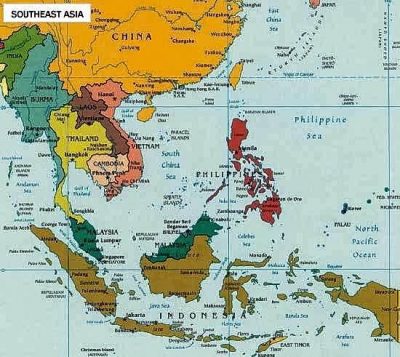
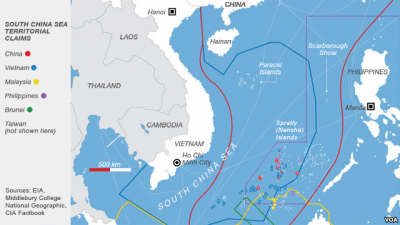
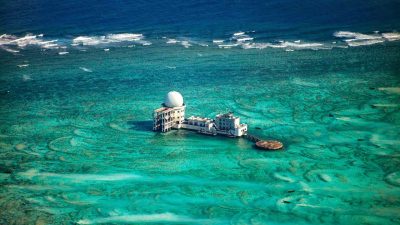
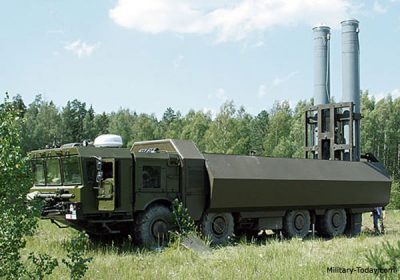
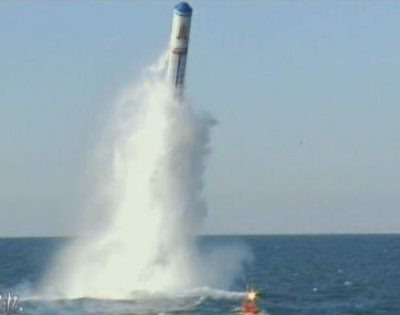
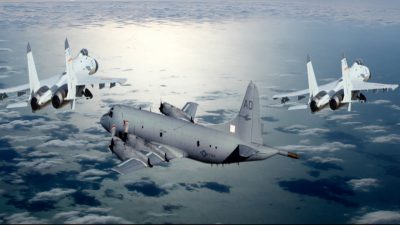
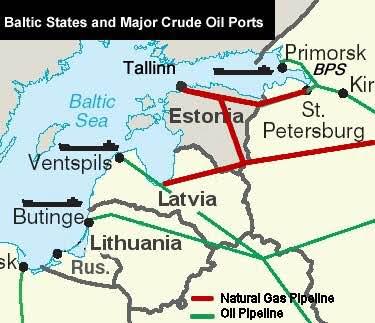

No Comments Yet!
You can be first to comment this post!